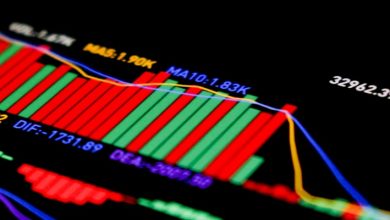Identifying Market Manipulation: Signs and Strategies

- Understanding Market Manipulation
- Common Signs of Market Manipulation
- Strategies to Detect Market Manipulation
- Impact of Market Manipulation on Investors
- Regulatory Measures Against Market Manipulation
- Case Studies of Market Manipulation Schemes
Understanding Market Manipulation
Market manipulation is a deceptive practice that involves controlling or artificially inflating the price of a security or commodity. This can be done through a variety of tactics, such as spreading false information, engaging in wash trading, or creating fake orders to give the illusion of demand. It is important for investors to be aware of the signs of market manipulation so they can protect themselves from potential fraud.
One common sign of market manipulation is unusually high trading volumes or price spikes that are not supported by market fundamentals. This can indicate that manipulators are trying to artificially drive up the price of a security in order to attract more buyers and create a sense of FOMO (fear of missing out) among investors. By closely monitoring trading volumes and price movements, investors can identify potential instances of manipulation.
Another red flag to watch out for is a lack of transparency in the market. Manipulators often operate in the shadows, using complex trading strategies and offshore accounts to hide their activities from regulators and other market participants. Investors should be wary of any suspicious behavior or unexplained fluctuations in price that could be a result of manipulation.
In addition, investors should be cautious of any sudden changes in market sentiment or news that seem too good to be true. Manipulators may spread false information or rumors to manipulate the market in their favor. By conducting thorough research and verifying information from multiple sources, investors can avoid falling victim to manipulation tactics.
Overall, understanding market manipulation is crucial for investors to protect their investments and make informed decisions. By staying vigilant, conducting due diligence, and being aware of the signs of manipulation, investors can minimize their risk exposure and navigate the market with confidence.
Common Signs of Market Manipulation
Market manipulation can take many forms, and it is essential to be aware of the common signs that may indicate manipulation is occurring. Some of these signs include:
- Abnormal Trading Volume: One of the key indicators of market manipulation is abnormal trading volume. If there is a sudden surge in trading volume without any significant news or events driving it, this could be a sign that manipulation is at play.
- Price Spikes or Drops: Another common sign of market manipulation is sudden and unexplained price spikes or drops. If a stock or asset experiences a significant price movement with no clear reason behind it, it may be the result of manipulation.
- Highly Coordinated Trading: Market manipulation often involves multiple actors working together to artificially inflate or deflate the price of an asset. If you notice highly coordinated trading activity, especially across different platforms or markets, this could be a red flag.
- False Information: Manipulators may spread false information or rumors to influence market sentiment and drive prices in a certain direction. Be wary of unverified news or tips that seem too good to be true.
- Insider Trading: Insider trading is a form of market manipulation where individuals with non-public information use it to their advantage. If you suspect that certain traders or entities are trading on inside information, this could be a sign of manipulation.
By being vigilant and staying informed about these common signs of market manipulation, you can better protect yourself and make more informed trading decisions.
Strategies to Detect Market Manipulation
One effective way to identify market manipulation is to implement strategies that can help detect any suspicious activities. By being vigilant and aware of certain signs, investors can better protect themselves from falling victim to fraudulent practices. Here are some strategies to consider:
- Monitor trading volume: Keep an eye on the volume of trades being conducted for a particular stock or asset. Unusually high or low trading volume could be a sign of market manipulation.
- Watch for price anomalies: Look for sudden and unexplained price movements that deviate from the overall trend. These anomalies could indicate manipulation at play.
- Stay informed about news and events: Stay up-to-date with relevant news and events that could impact the market. Manipulators may try to exploit such events for their gain.
- Use technical analysis: Utilize technical analysis tools to identify patterns and trends in market data. This can help uncover any irregularities that may point to manipulation.
- Collaborate with other investors: Share information and insights with other investors to gain a broader perspective on market activities. Working together can help identify manipulative practices more effectively.
By incorporating these strategies into your investment approach, you can better equip yourself to detect market manipulation and protect your interests in the financial markets. Remember to stay vigilant and proactive in monitoring market activities to safeguard your investments.
Impact of Market Manipulation on Investors
Market manipulation can have a significant impact on investors who are not aware of the signs and strategies to identify such practices. Investors who fall victim to market manipulation may experience financial losses and a loss of trust in the market. It is crucial for investors to educate themselves on the various ways in which market manipulation can occur and how to protect themselves from falling prey to these tactics.
One of the most common signs of market manipulation is abnormal trading activity. This can include sudden spikes or drops in stock prices that are not supported by fundamental factors. Investors should be wary of any unusually high trading volume or price movements that seem disconnected from market conditions. Additionally, investors should be cautious of any coordinated efforts to manipulate the market, such as pump and dump schemes or spoofing.
Another key sign of market manipulation is false or misleading information being disseminated to the public. This can include rumors, false press releases, or fake social media posts designed to artificially inflate or deflate the price of a security. Investors should always verify information from multiple sources before making investment decisions to avoid falling victim to false information.
In order to protect themselves from market manipulation, investors can employ various strategies. One important strategy is to diversify their investment portfolio to reduce the impact of any single security being manipulated. Additionally, investors should conduct thorough research on the companies they are investing in and pay attention to any red flags that may indicate potential manipulation.
Overall, being able to identify market manipulation and protect oneself from its impact is crucial for investors looking to navigate the financial markets successfully. By staying informed, remaining vigilant, and employing sound investment strategies, investors can mitigate the risks associated with market manipulation and make more informed investment decisions.
Regulatory Measures Against Market Manipulation
Regulatory measures play a crucial role in combating market manipulation. Various regulatory bodies, such as the Securities and Exchange Commission (SEC) in the United States, have implemented strict rules and guidelines to prevent and detect manipulative practices in the financial markets. These measures aim to protect investors and maintain the integrity of the market.
One of the key regulatory measures against market manipulation is the enforcement of insider trading laws. Insider trading occurs when individuals trade securities based on material non-public information, giving them an unfair advantage over other investors. By prohibiting insider trading and enforcing penalties for violators, regulators can deter manipulative behavior and ensure a level playing field for all market participants.
Another important regulatory measure is the implementation of surveillance and monitoring systems. Regulators utilize advanced technology and data analysis tools to detect suspicious trading patterns and abnormal price movements that may indicate market manipulation. By closely monitoring market activities, regulators can identify and investigate potential cases of manipulation in a timely manner.
Additionally, regulatory bodies often collaborate with other stakeholders, such as exchanges, self-regulatory organizations, and law enforcement agencies, to enhance their efforts in combating market manipulation. By sharing information and coordinating their actions, these entities can effectively address manipulative practices and hold perpetrators accountable for their actions.
Overall, regulatory measures against market manipulation are essential for maintaining market integrity and investor confidence. By enforcing rules, conducting surveillance, and fostering collaboration among various stakeholders, regulators can effectively deter manipulative behavior and promote a fair and transparent financial market for all participants.
Case Studies of Market Manipulation Schemes
Case Studies of Market Manipulation Schemes
Market manipulation can take many forms, and it is essential for investors to be aware of the various schemes that could potentially impact their investments. By examining real-life case studies of market manipulation, individuals can gain a better understanding of the signs and strategies employed by manipulators.
One notable case study of market manipulation involves the infamous “pump and dump” scheme. In this scheme, manipulators artificially inflate the price of a stock by spreading false information or engaging in aggressive marketing tactics. Once the price has reached a peak, the manipulators sell off their shares, causing the price to plummet and leaving unsuspecting investors with significant losses.
Another common form of market manipulation is known as “spoofing.” Spoofing involves placing large buy or sell orders with no intention of executing them in order to create a false impression of market demand. Once other investors react to these fake orders, the manipulators quickly cancel them and take advantage of the market movement.
In a different case study, wash trading was used as a market manipulation strategy. Wash trading involves buying and selling the same asset simultaneously to create artificial trading volume. This deceptive practice can give the illusion of market activity and attract unsuspecting investors who may not realize that the trading volume is fabricated.
By studying these case studies and understanding the tactics used by market manipulators, investors can better protect themselves from falling victim to manipulation. It is crucial to remain vigilant and skeptical of any unusual market behavior to avoid potential losses and preserve the integrity of the financial markets.



